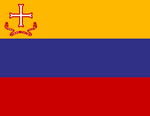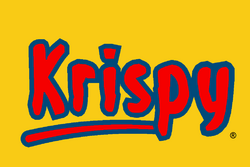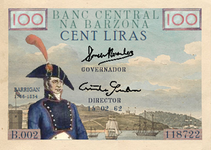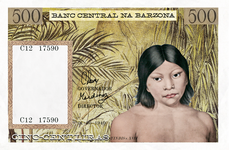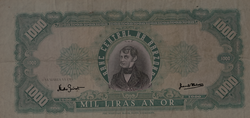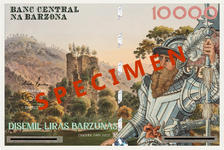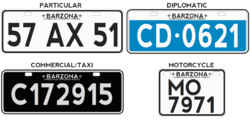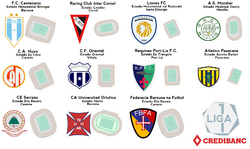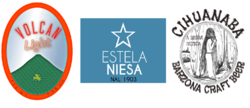Barzona: Difference between revisions
| Line 976: | Line 976: | ||
Barzona is a multilingual nation though the Barzuna language is the most widely spoken language in the country and the only official language of the republic. In the past it was considered the language of the peasants and working class, while colonial administrators spoke Castellanese, but since the 18th century has become the main language of Barzona. Towns along parts of the border with Allendea, such as Narvas, Castellanese is spoken and understood due to proximity to Allendea, others like Santa Margarita the Castellanese language is the most common. Franquese is spoken in Bussot, the lingua franca of the island, and a local Franquese-based patois (franquais or patois Sainte-Elenais) is the most common language in Santa Elena. | Barzona is a multilingual nation though the Barzuna language is the most widely spoken language in the country and the only official language of the republic. In the past it was considered the language of the peasants and working class, while colonial administrators spoke Castellanese, but since the 18th century has become the main language of Barzona. Towns along parts of the border with Allendea, such as Narvas, Castellanese is spoken and understood due to proximity to Allendea, others like Santa Margarita the Castellanese language is the most common. Franquese is spoken in Bussot, the lingua franca of the island, and a local Franquese-based patois (franquais or patois Sainte-Elenais) is the most common language in Santa Elena. | ||
The traditional largest indigenous language of Barzona is the Taqueza language, spoken though most of the country. The further north you get toward the border with Hueyapán the Taqueza language becomes less prevalent and instead Nawat dialects are more common. In much of Yavi Department (and in neighbouring areas of Allendea), the Ediyana language is spoken by the Edikanana (Yavi) peoples. In western Esquibel department there are divergent Ediyana dialect still spoken by a few indigenous people. The related Yañacuita language is spoken in north and central Yavi department. In the south of the department Onoyoyo is spoken in a few remote communities, which is an isolate language. In Sant-Martin department, Cubutacubun is the most common indigenous language, particularly in the north and west. In the southwest area (Eu Volcan canton) a variety of the Meyfe language spoken in Allendea is spoken. Nanquin is spoken by the indigenous people of the [https://opengeofiction.net/#map=12/-13.0235/19.0743&layers=B Santa Marta islands], experts don't know the position of the language in linguistics very well, but there are some similarities with the Taqueza languages observed. | The traditional largest indigenous language of Barzona is the Taqueza language, spoken though most of the country but because of the colonial history saw a massive decline in speakers where it is endangered in the modern period. The further north you get toward the border with Hueyapán the Taqueza language becomes less prevalent and instead Nawat dialects are more common, though also the number of speakers reduced dramatically due to colonization and government policies. In much of Yavi Department (and in neighbouring areas of Allendea), the Ediyana language is spoken by the Edikanana (Yavi) peoples. In western Esquibel department there are divergent Ediyana dialect still spoken by a few indigenous people. The related Yañacuita language is spoken in north and central Yavi department. In the south of the department Onoyoyo is spoken in a few remote communities, which is an isolate language. In Sant-Martin department, Cubutacubun is the most common indigenous language, particularly in the north and west. In the southwest area (Eu Volcan canton) a variety of the Meyfe language spoken in Allendea is spoken. Nanquin is spoken by the indigenous people of the [https://opengeofiction.net/#map=12/-13.0235/19.0743&layers=B Santa Marta islands], experts don't know the position of the language in linguistics very well, but there are some similarities with the Taqueza languages observed. In the south coast of Bussot there are still a few Itanese communities where the Itanese language is spoken, it used to be the historic language of the island but the indigenous were displaced to a few areas of the more remote south coast. | ||
==Climate== | ==Climate== | ||
Revision as of 22:00, 1 May 2022
Loading map... |
Barzona, officially the Republic of Barzona is a country in southern Tarephia along the Strait of Lyc. Barzona is comprised of the mainland of Barzona along with two island departments. The capital city is Carante and the most populous city is Barzona. Barzona is divided into 16 departments, two of them are insular (island) departments away from Barzona). Mainland departments are divided into cantons, of which there are 90. Cantons and insular departments are divided into municipalities, there are 684 in Barzona.
Barzona was settled by several indigenous cultures prior to the time of colonization, with advanced civilizations and settlements. The Franquese were the first to colonize what is now Barzona, starting in the 13th century onward. The Castellanese settled Barzona in the 16th century, taking over from the Franquese. Barzona declared independence in 1817 and the entire territory was liberated from Castellanese rule in 1821. Barzona was a part of the Republic of Gran Fojenica (with Allendea) until 1833. Barzona went through a period of civil and military governments for many decades. From 1965 to 1978 Barzona was under a military dictatorship before transitioning to democratic rule.
Barzona is a member of the Assembly of Nations and Tarephian Cooperation Council.
| Republic of Barzona Template:Lang | |||||
|---|---|---|---|---|---|
| |||||
Loading map... | |||||
| Motto: "Terra libre, unita e feliz" A free land, united and happy | |||||
| Capital | Carante | ||||
| Largest city | Barzona | ||||
| Official languages | Barzuna | ||||
| • Regional languages | Franquese, castellanese, various indigenous languages | ||||
| Demonym | Barzuna | ||||
| Government | Constitutional, presidential republic | ||||
| • President | TBD | ||||
| • Vice President | TBD | ||||
| Legislature | Cogreso na Diputados | ||||
| Area | |||||
| • Total | 65405.65 km2 | ||||
| • Water (%) | 14% | ||||
| Population | |||||
| • Estimate (2019) | TBD | ||||
| • Census (2010) | TBD | ||||
| • Density | TBD/km2 TBD/sq mi | ||||
| Timezone | Central Tarephia Standard Time (WUT +1:00) | ||||
| Currency | Lira (BAL) | ||||
| Drives on the | right | ||||
Barzona, officially the Republic of Barzona (Barzonian: Republica na Barzona) is a country located in southwestern Tarephia. It is bordered by Hueyapan to the north, Allendea to the west and Broceliande to the south, as well as Valaga and Tempeira in insular areas. Barzona has a surface area of 56459.24km² (total with territorial waters 66939.56 km²) and a population of ?. The capital city is Carante, and the largest city is Barzona.
Barzona is a diverse country despite its small size, unofficially divided into five regions, costa (the coast), serra (the mountains), selva (the jungle), marca (the march) and insular Barzona. It is ecologically diverse, with a lot of flora and fauna, beaches, mountains and highlands, and dense, humid rainforest. Barzona is a member of the Assembly of Nations and the Tarephia Cooperation Council.
History
The coastal area and coastal-interior regions of Barzona were explored from Broceliande from the 13th century. Probably the first settled area of Barzona by the Rivagiens was the village of Sant-Miquel; the local church was consecrated in 1202. The indigenous people of the area attacked and harassed against the Franqueterre knights exploring the region, who were forced to build castles to defend their areas and became rather limited in their general settlement due to the difficulty in subjugating the indigenous peoples. By the end of the 13th century, the walled towns of Bergantin (ca. 1268) and Barzona (1280) were created to help control trade along the coast, followed by Port-Lis, Iban and Fontanet in the 14th century.
By the early 16th century, they were still limited to a handful of coastal towns, castles and fortresses. In the early 15th century an expedition of knights sailed up the Yavi River in the jungle to explore the area, but were lost and likely died from disease or animals, or were killed by indigenous peoples.
The Castellanese arrived in t1650s, and over the next 40 years were able to subjugate a lot of modern-day Allendea and Barzona, having support from the coastal and lowland caciques for fighting the Franquese, and using their support to cross the mountains and settle them.
Geography
Barzona is divided into four geographic and climactic regions; from east to west are selva (rainforest), serra (mountains), costa (coast) and izulas (islands). Each area has a variety of different flora, fauna.
Government and politics
Administrative divisions
The first level subdivisions of Barzona are departments, equivalent to provinces or states elsewhere. Departments are further divided into Cantons, which are themselves comprised of municipalities of various sizes, with one as cantonal seat. Muncipalities are either urban, with a larger town or city, or rural, which can include different villages and localities in one municipality. In Barzona, there are 65 cantons and 279 municipalities. Barzona can also be divided into continental and insular Barzona, continental Barzona being on the Tarephian mainland and insular Barzona comprising of many islands and rocks. Both the insular departments, Bussot and Santa Elena e as Izulas do not have cantons.
| Department | Area (km²) | Population | Capital | |
|---|---|---|---|---|
| Flag | Aurora | 1071.69 | Port-Lis | |
| Flag | Barzona | 4550.78 | Barzona | |
| Caborna | 3194.16 | Caborna | ||
| Flag | Calvet | 3935.40 | Iban | |
| Carante | 1778.24 | Carante | ||
| Flag | Centro | 3704.44 | Barrigan | |
| Daube | 6140.45 | Pasacana | ||
| Esquibel | 5504.01 | Ferramont | ||
| Marca | 8711.09 | Mondier | ||
| Niesa | 6940.96 | Niesa | ||
| Flag | Sant-Martin | 8524.03 | Safiza | |
| Serrania | 4809.80 | Belmont | ||
| Flag | Vianna | 1611.48 | Vianna | |
| Yavi[1] | 12,072.34 | Narvas | ||
| Insular departments | ||||
| Bussot | 3194.09[2] | Montfort | ||
| Santa Elena e as Izulas | 2313.37[3] | 1181 | Santa Elena | |
International relations
Barzona has relations with several countries.
Heads of State
Heads of State of Barzona
| Head of State of Carante | ||||||||
|---|---|---|---|---|---|---|---|---|
| № | Portrait | President | Term of office | Party | Notes | |||
| 1 | 
|
Juan Piero Belmont (1763-1827) |
9 June 1817 – 25 September 1817 |
Military | Head of State and Generalissimo | |||
| File:Flag of Allendea Oriental.png President of the South Tarephian Republic | ||||||||
|---|---|---|---|---|---|---|---|---|
| № | Portrait | President | Term of office | Party | Notes | |||
| 1 | Mateus Barrigan (1766-1834) |
9 June 1833 – 7 May 1834 |
Independent | Died in office | ||||
| 2 | File:Coat of Arms of Allendea Oriental.png | Francisco Figueras Costa (1783-1854) |
7 May 1834 – 2 December 1835 |
Independent | ||||
| 3 | 
|
Lucio Belcamp (1785-1843) |
2 December 1835 – 4 April 1836 |
Military | ||||
| 4 | File:Coat of Arms of Allendea Oriental.png | Antonio Villacis e Martell (1792-1855) |
4 April 1836 – 12 September 1836 |
Independent | ||||
| 5 | File:Coat of Arms of Allendea Oriental.png | Eusebio Gardes (1791-1863) |
12 September 1836 – 21 May 1837 |
Independent | ||||
| 6 | File:Coat of Arms of Allendea Oriental.png | Antonio Villacis e Martell (1792-1855) |
21 May 1837 – 6 February 1839 |
Independent | Deposed in coup | |||
| File:Flag of Barzona (1839-1855).png President of the Republic of Barzona File:Coat of Arms of Barzona (1839-1855).png | ||||||||
|---|---|---|---|---|---|---|---|---|
|
Template:Legend2 Template:Legend2 Template:Legend2 Template:Legend2 | ||||||||
| № | Portrait | President | Term of office | Party | Notes | |||
| 7 | 
|
Lucio Belcamp (1785-1843) |
6 February 1839 – 9 December 1841 |
Military | Promulgated new constitution, establishing Republic of Barzona | |||
| 8 | File:Coat of Arms of Barzona (1839-1855).png | Antonio Nicollet (1800-1866) |
9 December 1841 – 12 March 1842 |
Conservative | Deposed in coup | |||
| 9 | 
|
Lucio Belcamp (1785-1843) |
12 March 1842 – 5 April 1843 |
Military | Third term, assassinated | |||
| 10 | File:Coat of Arms of Barzona (1839-1855).png | Henrique Belmont e Tárrega (1804-1880) |
5 April 1843 – 18 July 1844 |
Liberal | ||||
| 11 | File:Coat of Arms of Barzona (1839-1855).png | Antonio Nicollet (1800-1866) |
18 July 1844 – 2 June 1847 |
Conservative | ||||
| 12 | File:Coat of Arms of Barzona (1839-1855).png | Victor Castelmont (1796-1854) |
2 June 1847 – 12 April 1851 |
Conservative | ||||
| 13 | File:Coat of Arms of Barzona (1839-1855).png | Federico Bartols (1788-1858) |
12 April 1851 – 16 April 1855 |
Conservative | ||||
| 14 | File:Coat of Arms of Barzona (1839-1855).png | Eusebio Verrier (1789-1856) |
16 April 1855 – 21 July 1855 |
Conservative | ||||
| File:Flag of Barzona (1855-1889).png President of the United States of Barzona File:Coat of Arms of Barzona (1855-1889).png | ||||||||
|---|---|---|---|---|---|---|---|---|
|
Template:Legend2 Template:Legend2 Template:Legend2 Template:Legend2 | ||||||||
| № | Portrait | President | Term of office | Party | Notes | |||
| 15 | File:Coat of Arms of Barzona (1855-1889).png | Arthur Fontenoy (1792-1869) |
21 July 1855 – 4 January 1859 |
Liberal | Took over in coup, established new constitution. | |||
| 16 | File:Coat of Arms of Barzona (1855-1889).png | Juan Felipe Benavides (1801-1874) |
4 January 1859 – 8 October 1862 |
Liberal | ||||
| 17 | File:Coat of Arms of Barzona (1855-1889).png | Sebastian Fuster (1809-1882) |
8 October 1862 – 21 October 1866 |
Independent | ||||
| 18 | File:Coat of Arms of Barzona (1855-1889).png | Felix Villanova Santmartin (1804-1877) |
21 October 1866 – 14 May 1869 |
Liberal | Deposed in coup | |||
| 19 | 
|
Juan Antonio Serra (1812-1843) |
14 May 1869 – 26 March 1874 |
Military | ||||
| 20 | File:Coat of Arms of Barzona (1855-1889).png | Juan Martines Becerra (1810-1890) |
26 March 1874 – 2 July 1874 |
Independent | ||||
| 21 | File:Coat of Arms of Barzona (1855-1889).png | Gilberto Sarria (1819-1892) |
2 July 1874 – 19 November 1877 |
Conservative | ||||
| 22 | File:Coat of Arms of Barzona (1855-1889).png | Felix Villanova Santmartin (1804-1877) |
19 November 1877 – 22 December 1877 |
Liberal | Died in office | |||
| 23 | File:Coat of Arms of Barzona (1855-1889).png | Juan Josep Olente (1822-1906) |
22 December 1877 – 16 May 1882 |
Liberal | ||||
| 24 | File:Coat of Arms of Barzona (1855-1889).png | Miquel Ferrier (1824-1911) |
16 May 1882 – 22 October 1883 |
Liberal | ||||
| 25 | File:Coat of Arms of Barzona (1855-1889).png | Gilberto Sarria (1819-1892) |
22 October 1883 – 28 July 1887 |
Conservative | ||||
| 26 | File:Coat of Arms of Barzona (1855-1889).png | Miquel Ferrier (1824-1911) |
28 July 1887 – 6 November 1888 |
Liberal | ||||
| 27 | 
|
Eusebio Tempines (1830-1923) |
6 November 1888 – 14 May 1889 |
Liberal | ||||
|
Template:Legend2 Template:Legend2 Template:Legend2 Template:Legend2 Template:Legend2 | ||||||||
|---|---|---|---|---|---|---|---|---|
| № | Portrait | President | Term of office | Party | Notes | |||
| 28 | 
|
Piero Esquibel (1821-1896) |
14 May 1889 – 2 November 1889 |
Military | Took over in coup, ushered in military era | |||
| 29 | 
|
Felipe Jordes Viergens (1841-1927) |
2 November 1889 – 1 March 1892 |
Military | ||||
| 30 | 
|
Antonio Fulbright (1848-1929) |
1 March 1892 – 18 January 1893 |
Military | ||||
| 31 | 
|
Domenique Fortuna (1842-1944) |
18 January 1893 – 23 February 1898 |
Conservative | ||||
| 32 | 
|
Miquel Ferrier (1824-1911) |
23 February 1898 – 2 March 1903 |
Liberal | ||||
| 33 | 
|
Domenique Fortuna (1842-1944) |
2 March 1903 – 14 April 1906 |
Conservative | ||||
| 34 | 
|
Andreus Soto Bouras (1860-1939) |
14 April 1906 – 1 June 1914 |
Conservative | ||||
| 35 | 
|
Camilo Fontana Buchmann (1853-1933) |
1 June 1914 – 21 May 1916 |
Independent | ||||
| 36 | 
|
Eusebio Tempines (1830-1923) |
21 May 1916 – 12 May 1921 |
Liberal | ||||
| 37 | 
|
Domenique Fortuna (1842-1944) |
12 May 1921 – 28 November 1922 |
Conservative | Fortuna's last term | |||
| 38 | 
|
Juan Francisco Brasefort (1863-1938) |
28 November 1922 – 10 November 1927 |
Liberal | ||||
| 39 | 
|
Paulo Artigas (1867-1940) |
10 November 1927 – 9 March 1930 |
Liberal | ||||
| — | 
|
Junta Nacional | 9 March 1930 – 10 August 1930 |
Military | ||||
| 40 | 
|
Andreus Martell (1888-1962) |
10 August 1930 – 18 January 1939 |
Military | ||||
| 41 | 
|
Piero Encines (1891-1975) |
18 January 1939 – 12 December 1943 |
Conservative | ||||
| 42 | 
|
Manuel Silva Martell (1902-1987) |
12 December 1943 – 30 November 1948 |
Conservative | ||||
| 43 | 
|
Gilberto Saldania (1885-1960) |
30 November 1948 – 16 July 1953 |
Conservative | ||||
| 44 | 
|
David Salas (1891-1957) |
16 July 1953 – 2 April 1957 |
Conservative | Assassinated | |||
| 45 | 
|
Gilberto Saldania (1885-1960) |
2 April 1957 – 2 July 1960 |
Conservative | ||||
| 46 | 
|
Julian Delbonis (1914-1965) |
2 July 1960 – 21 May 1965 |
Liberal | Killed in coup | |||
| — | 
|
Junta Nacional | 21 May 1965 – 28 November 1965 |
Military | ||||
| 47 | 
|
Gabriel Passos Ricard (1921-1984) |
28 November 1965 – 26 May 1971 |
Military | ||||
| 48 | 
|
Paulo Tenente (1918-1990) |
26 May 1971 – 14 January 1973 |
Military | ||||
| 49 | 
|
Andreus Torres (1928-2004) |
14 January 1973 – 21 June 1974 |
Military | ||||
| 50 | 
|
Antonio Henderson Grenas (1922-2011) |
21 June 1974 – 12 July 1978 |
Military | Led transition to democratic government after mass protests | |||
| 51 | 
|
Felix Casamont (1931-2018) |
12 July 1978 – 3 March 1981 |
Democratic Alliance | Deposed by coup | |||
| 52 | 
|
Felipe Abbas (1917-2005) |
3 March 1981 – 27 May 1981 |
Independent | Proclaimed president by military coup that was defeated with countercoup months later | |||
| 53 | 
|
Felix Casamont (1931-2018) |
27 May 1981 – 27 May 1986 |
Democratic Alliance | ||||
| 54 | 
|
Juan Josep Cousins Salomon (1936-1960) |
27 May 1986 – 22 May 1991 |
Conservative | ||||
| 55 | 
|
Mario Villanova (1940-) |
22 May 1991 – 22 May 1996 |
Conservative | Investigated for corruption, in prison since 2010 | |||
| 56 | 
|
Lisette Masis (1955-) |
22 May 1996 – 4 January 2005 |
Democratic Alliance | Impeached by congress, sentenced 7 years in prison in 2008 for corruption | |||
| 57 | 
|
Piero Bos (1956-) |
4 January 2005 – 8 October 2005 |
Democratic Alliance | Interim president | |||
| 58 | 
|
Sebastian Capels (1962-) |
8 October 2005 – 7 October 2015 |
Conservative | Charged with embezzlement by courts in 2018, fled country | |||
| 59 | 
|
Mario Nadir (1970-) |
7 October 2015 – 7 December 2020 |
Democratic Alliance | Corruption rumors while in government | |||
| 60 | 
|
Lisette Masis (1955-) |
7 December 2020 – |
NOVA | ||||
Economy
Barzona has a mixed economy, with significant policy and sectoral changes from agriculture and raw material extraction to more diversification into new sectors.
Agriculture in Barzona has traditionally centered on various tropical fruits, coffee and chocolate. Fishing is also important in Barzona, primarily along the coasts. Mining, typically for copper and nickel were a big sector in the economy, though that industry has been in decline over the past 30 years. Logging is important economic activity in the jungles of western Barzona. In the last 20 years, tourism has become one of the fastest-growing industries in Barzona.
Businesses in Barzona
One of the most successful businesses of Barzona is Krispy, a fried chicken restaurant chain that originated in Barzona city and is now present nationally. Many businesses in Barzona are from other TCC nations and contribute to the economy.
Demographics and culture
Ethnicity
The people of Barzona come from a variety of ancestries. Over half of Barzuna are mestizo, a mix of (Castellanese, Franquese) white with indigenous. White Barzuna people are the second largest ethnic group. Indigenous are found throughout Barzona, the biggest ethnic group is the Edikanana (commonly known as Yavi after the river), followed by Taqueza, Yañacuita, Nanquin, Meyfe, Onoyoyo (used to be known as Daida, a Yavi term that means angry) and Itanese.
Language
Barzona is a multilingual nation though the Barzuna language is the most widely spoken language in the country and the only official language of the republic. In the past it was considered the language of the peasants and working class, while colonial administrators spoke Castellanese, but since the 18th century has become the main language of Barzona. Towns along parts of the border with Allendea, such as Narvas, Castellanese is spoken and understood due to proximity to Allendea, others like Santa Margarita the Castellanese language is the most common. Franquese is spoken in Bussot, the lingua franca of the island, and a local Franquese-based patois (franquais or patois Sainte-Elenais) is the most common language in Santa Elena.
The traditional largest indigenous language of Barzona is the Taqueza language, spoken though most of the country but because of the colonial history saw a massive decline in speakers where it is endangered in the modern period. The further north you get toward the border with Hueyapán the Taqueza language becomes less prevalent and instead Nawat dialects are more common, though also the number of speakers reduced dramatically due to colonization and government policies. In much of Yavi Department (and in neighbouring areas of Allendea), the Ediyana language is spoken by the Edikanana (Yavi) peoples. In western Esquibel department there are divergent Ediyana dialect still spoken by a few indigenous people. The related Yañacuita language is spoken in north and central Yavi department. In the south of the department Onoyoyo is spoken in a few remote communities, which is an isolate language. In Sant-Martin department, Cubutacubun is the most common indigenous language, particularly in the north and west. In the southwest area (Eu Volcan canton) a variety of the Meyfe language spoken in Allendea is spoken. Nanquin is spoken by the indigenous people of the Santa Marta islands, experts don't know the position of the language in linguistics very well, but there are some similarities with the Taqueza languages observed. In the south coast of Bussot there are still a few Itanese communities where the Itanese language is spoken, it used to be the historic language of the island but the indigenous were displaced to a few areas of the more remote south coast.
Climate
Barzona has a fairly varied though largely warmer climate owing to its geographic location and latitude. Coastal Barzona is fairly warm and humid, but benefits from a see brreze to bring cooler weather. Mountainous areas of Barzona tend to be cooler and often perpetually springlike, with cool-cold winters, though snow is very rare aside from mountain summits. Inner Barzona (Yavi Department) is consistently very hot and humid, characterized by a a fairly rainy summer and a comparatively drier winter.
Climates in Barzona
Culture
Cuisine
The interior of Barzona has a cuisine influenced by the combination of indigenous and Castellanese dishes. Common foods throughout the country include dishes like fried chicken, polardo farcido (a stuffed chicken), empanadas, baleadas and pupusas, quesadilla na formaze (a cheese cake), casamento (rice and beans served with tortillas and breakfast). A lot of dishes are similar to other countries in the region due to the colonial history. Barzonan cuisine is moderately spicy, fragrant and hearty. In Carante and the mountains one of the most typical dishes is the simultanio (or simultanio serrano), a stew of chicken, pork, beef (sometimes also lamb) with potatoes, plantains, yuca, corn and tortillas. Certain exotic dishes can also be found in parts of the country, such as iguana, garrobo (armadillo) and others.
In Southern Barzona and coastal Barzona, Franquese based dishes are a major part of the traditional food, often using local ingredients and substitutions. Seafood is also important in the local food. A lot of the dishes such as estofat, bollabasa and others are often served with spicy chiles and boiled corn, which are not present in the original Franquese dish. In this part of Barzona you can find for example pistou soup, though the pistou is generally spicy and the soup is often done with black beans. Barzonan casolet (cassoulet) is prepared with achiote to give it a red color. A lot of dishes make use of seafood, including stews and other fish dishes like fried fish, ceviche, marmitaco. Seafood empanadas are also a specialty of the coast. In the very south east of Barzona esgargotes berganinos (escargots bergantins) as a local delicacy, stewed with a chili sauce.
In the rainforest area there is a unique cuisine based off of the indigenous culture. Dishes are mainly focused on freshwater fish, yuca, other herbs and tubers, tacazo (dish with boiled plantain) and some meat like pork, chicken and capybara. The islands of Barzona have their own unique cuisine as well. In Bussot a lot of the food is similar to southern Barzona and Broceliande with dishes like ratatouille, bouillabaise, cassoulet, fried and stewed seafood. They also have their own version of empanadas, the empanade, which is always fried unlike in the mainland of Barzona and are usually served with chiles. In Sainte-Elena and La Pitaye seafood is a major part of the cuisine, with dishes like stews, fried fish, shrimp, such as divé de pwason (combination plate of different fried fishes) and estoufad de poulpe (a octupus stew). A popular fast food is boquit/bokit, a flatbread sandwich. Bussotian and Sainte-Elenian cuisine is sometimes spicier than in Barzona.
Military
The Forzas Armadas na Barzona is the armed forces. There are three branches of the military, the army, air force and coast guard. During the dictatorship period, Barzona maintained a well-equipped army, and had air force and navy that lagged behind in alocated funds and resources. Since the 1980s, more of a focus is placed on Barzona's contribution to Lycene and TCC defence, and the government embarked on a program throug the 1990s that eliminated the navy in exchange for better equipped coast guard, and brought more funding to the air force to become a speciality for Barzona.
Army
- Fort militar na Barzona: Army base
- Fort militar na Cornel: Army base, hosts the comandos of Barzona and military academy.
- Fort militar na Pasacana: Military base and large training area in Pasacana.
Air force
- Base aeria na Pinos: Largest air force base, contains fighter and fighter-bomber aircraft, helicopters, transport/cargo aircraft. Is also used by the Federal States Air Force 13th Air Expeditionary Wing.
- Base aeria na Narvas: Along Allendea border on Yavi River, contains a few fighter aircraft and transport and supply helicopters.
- Base aeria na Santa Carolina: Base in Barzona city with fighter and transport units.
- Base aeria Sandrina: Base in the Carante area, has mostly transport aircraft and some fighter-bombers.
Coast guard
- Base na Bergantin: small coast guard base in south east Barzona.
- Base na Barzona: largest base of the coast guard.
Gallery
Notes and references
- ↑ Yavi was known as Departamento nalla Selva before being renamed on 1 January 2016 after consultation with indigenous peoples of the area.
- ↑ Surface area for the islands, rocks and islets comprising the department totals just 102.4km².
- ↑ Surface area for the islands comprising the department totals just 6.25km².
